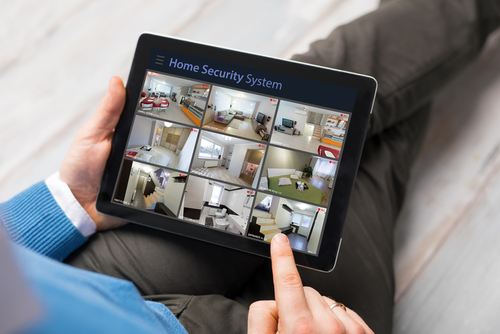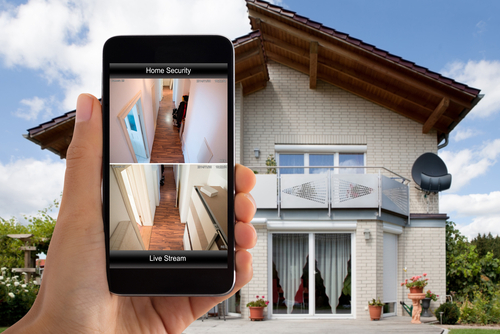Home Security: Your Best Defense Against Harsh Weather
Bad weather can have a profound impact on your home, from the structure to the security. How can you ensure your home remains safe and secure when harsh weather strikes? This article will guide you through understanding the implications of bad weather on home security, reinforcing your home’s physical structures, investing in weatherproof security systems, utilizing smart home technology, and creating a comprehensive emergency plan.

SEO Global Include
Understanding the Implications of Bad Weather on Home Security
When Mother Nature throws her worst at us, be it in the form of relentless rain, gale-force winds, or a blizzard of epic proportions, it’s not just the physical structure of our homes that comes under threat. The security of our homes can also be undermined.
A power outage, which is not uncommon during severe weather, can leave security systems incapacitated and our homes exposed to potential break-ins. Similarly, the havoc wrought by a storm can compromise doors and windows, creating convenient entry points for intruders. Even the simple noise generated by a severe storm can camouflage the sounds of a break-in.
So, before we delve into the proactive measures we can take to safeguard our homes during bad weather, let’s first understand the myriad ways in which bad weather can impact home security. Recognizing these potential threats is a critical first step in fortifying our homes against the furies of nature, and ensuring they remain safe havens for us and our loved ones, come rain, wind, or snowstorm.

Reinforcing Your Home's Physical Structures
Sheltering from a storm doesn’t just mean huddling inside while the weather does its worst. It also means fortifying your home to stand strong against the elements. This begins with reinforcing the physical structures of your home, essentially building a strong line of defense.
Your doors and windows are at the forefront of this battle. These gateways to your home must be robust enough to shrug off battering winds and a torrent of rain or snow. Consider storm shutters or impact-resistant glass to fortify your windows. For your doors, opt for reinforced versions equipped with sturdy locks that can resist the efforts of any would-be intruder seeking to exploit the chaos outside.
But the fortification efforts should not stop there. Your roof, gutters, and drainage systems are also critical in this endeavor. A sturdy roof can shield your home from the onslaught of precipitation, while well-maintained gutters and drainage systems ensure that water damage is kept at bay.
In essence, think of your home as a castle and the approaching storm as a siege. Just as a castle’s defenses are continually tested and strengthened, so too should your home’s physical structures. Through these reinforcements, your home can become an impenetrable fortress, capable of withstanding the harshest weather conditions. In doing so, you not only protect your property, but also provide a secure and safe environment for your family.

Investing in Weatherproof Security Systems
Imagine this: a storm is raging outside, you’ve lost power, and the security system you thought would protect you is now useless. You don’t have to live with this worry if you invest in weatherproof security systems. These systems are constructed to withstand harsh weather conditions, and importantly, continue to function even in power outages.
Let’s delve a little deeper into what these systems can offer. For starters, they come equipped with outdoor cameras built to resist the elements. These are not just any cameras, but ones that can endure the relentless pounding of a torrential downpour, the bone-chilling cold of a snowstorm, and winds that could make a flagpole shudder.
But it’s not just about cameras. Weatherproof security systems also include motion detectors that continue to sense movement around your home, regardless of how much the heavens have opened up. So, if a brazen burglar thinks he can use the cover of a storm to break in, your weatherproof security system will detect his movement and sound the alarm.
Speaking of alarms, weatherproof security systems also feature robust alarm systems. These alarms are designed to withstand the forces of nature and continue functioning without power, ensuring that any breach in your home’s security does not go unnoticed.
In the battle against bad weather, your home’s security system should be your unwavering ally. By investing in weatherproof security systems, you’re arming yourself with a steadfast guardian that will remain operational come what may. They offer an invaluable sense of peace and security, knowing that even when the weather is at its worst, your home’s security is at its best. So, don’t let the weather rain on your parade; invest in weatherproof security systems and weather any storm with confidence.

Utilizing Smart Home Technology for Enhanced Security
Harnessing the power of smart home technology can serve as a critical tool in bolstering your home’s security, particularly during inclement weather. This innovative technology is not just about convenience; it’s about taking proactive measures to ensure the safety and security of your abode.
Consider Wi-Fi connected cameras. With these devices installed, you have the ability to monitor your home in real time, no matter where you are. You could be sipping coffee in a cafe across town or sitting at your desk in the office, and still have the ability to keep a vigilant eye on your home. When bad weather rolls in, these cameras offer the reassurance that you can stay connected to what’s happening at home.
But it doesn’t stop at cameras. Think about smart locks. In the midst of a storm, when power outages may be likely, having the ability to remotely lock or unlock your doors provides an extra level of security. Imagine if a family member is locked out during a storm, or you’ve had to evacuate and forgot to lock the door. A simple tap on your smartphone, and you can control access to your home, even from afar.
Let’s not forget about smart lighting systems. The ability to remotely control your home’s lights can be a potent deterrent to potential intruders. You can make your home appear occupied by turning lights on or off at irregular intervals, even if you’re not there. This can be particularly useful during bad weather, when the cover of darkness and noise can provide cover for those with nefarious intentions.
It’s important to note, many of these smart home devices come with battery backup options. This ensures they continue to function, even when the power is out. You may not be able to stop the storm from knocking out your power, but you can certainly ensure that your home’s smart technology continues to operate, keeping your home secure.
In essence, smart home technology gives you an added level of control and reassurance. It empowers you to maintain your home’s security, irrespective of the weather conditions outside. So, as you look to fortify your home against bad weather, don’t overlook the potential of smart home technology. It’s not just about the future; it’s about safeguarding your present.
Creating a Comprehensive Emergency Plan
In the battle against harsh weather, your home’s defenses and security systems are your fortress. But like any well-prepared warrior, you also need a well-thought-out strategy. This strategy comes in the form of a comprehensive emergency plan, a crucial component of your overall home security during inclement weather.
Think of your emergency plan as your playbook in the face of a storm. It details your game plan from start to finish, ensuring every family member knows exactly what to do, when to do it, and how. This plan should cover various scenarios – from power outages and sudden evacuations to seeking shelter within your home.
For instance, what should you do if you lose power? Consider including steps for manually overriding electronic security systems or shifting to backup power options. If evacuation is necessary, does everyone know the safest and quickest routes out of your home? Map these out and practice them.
In the event that staying home is the safest option, identify the most secure areas of your house to hunker down in. This could be a basement, an internal room without windows, or any space that’s shielded from the potential ravages of a storm.
Communication is key in any emergency, so your plan should include a reliable method for contacting each other. Establish a point of contact, maybe a trusted friend or relative who lives out of town, who every family member can check in with. This will reassure everyone that, even if separated, you’re all safe and sound.
Apart from planning your moves, it’s essential to prepare an emergency kit too. This kit should be stocked with necessities like flashlights, batteries, a battery-powered or hand-crank radio, first-aid supplies, and enough non-perishable food and water to sustain your family for at least a few days. Remember, your emergency kit is like your survival bag, packed and ready to go at a moment’s notice, or designed to keep you comfortable if you’re riding out the storm at home.
Of course, no plan remains perfect forever. Weather patterns change, new vulnerabilities may be exposed in your home, and your family’s needs may evolve. That’s why it’s vital to revisit your emergency plan regularly, fine-tuning it based on lessons learned, changes in your home or family dynamics, and advancements in technology or home security options.
Remember, harsh weather might be uncontrollable, but how you prepare for it is completely in your hands. So, don’t be a passive observer when the storm clouds gather. Be proactive, get planning, and ensure that, come what may, your home remains your safe haven.
